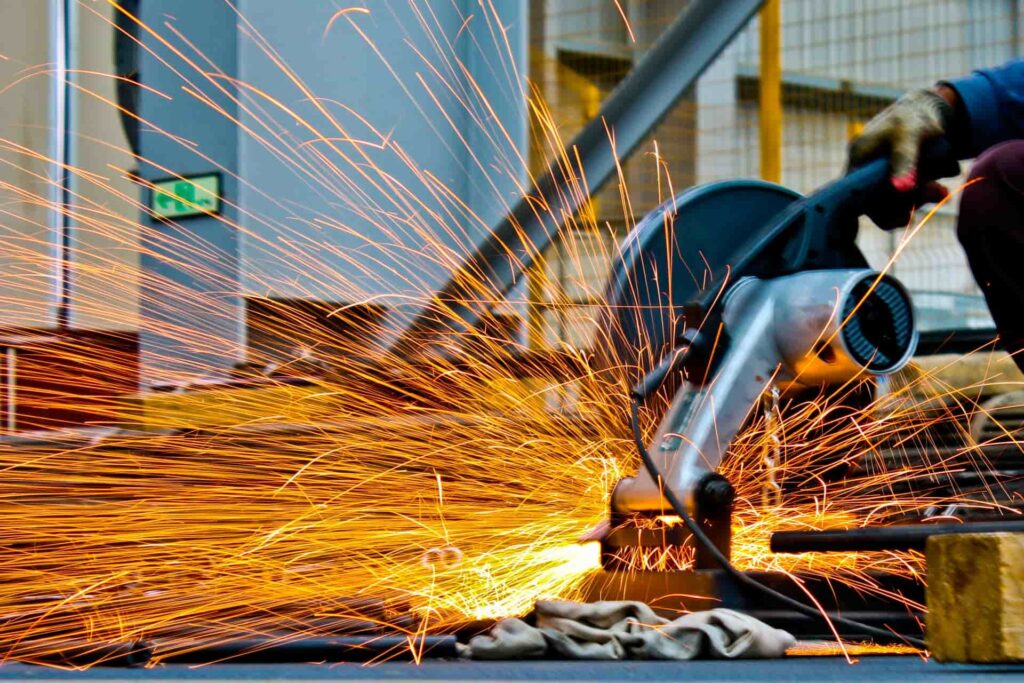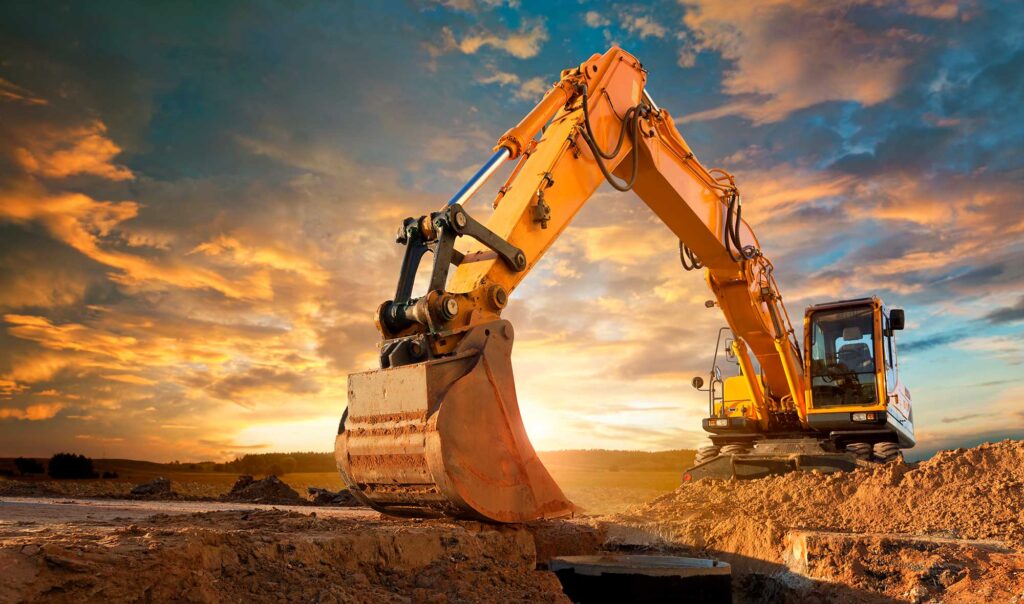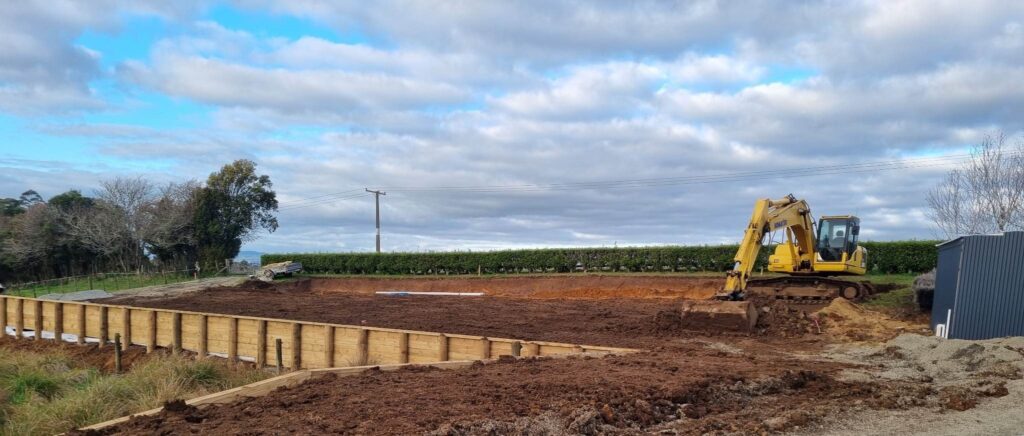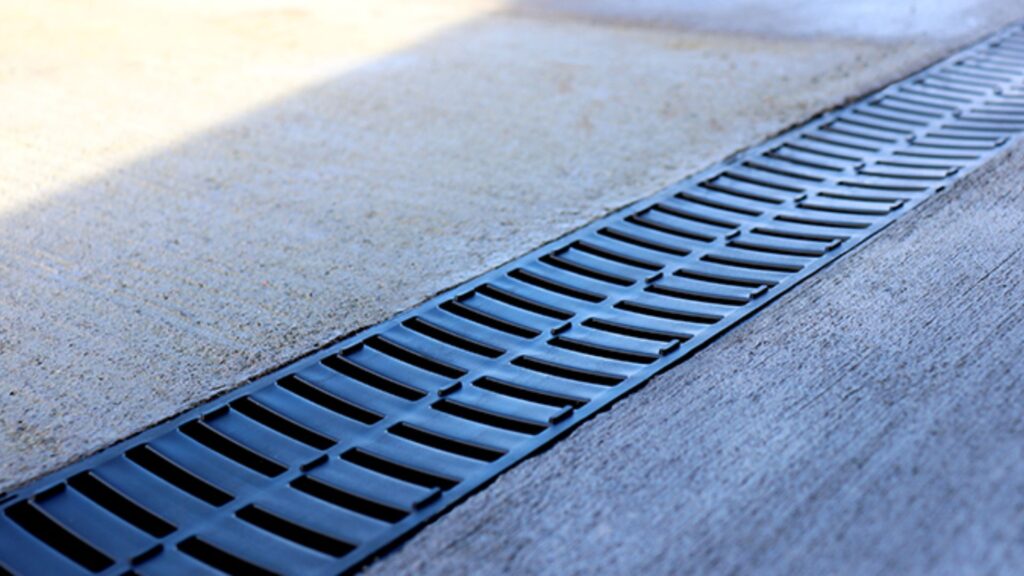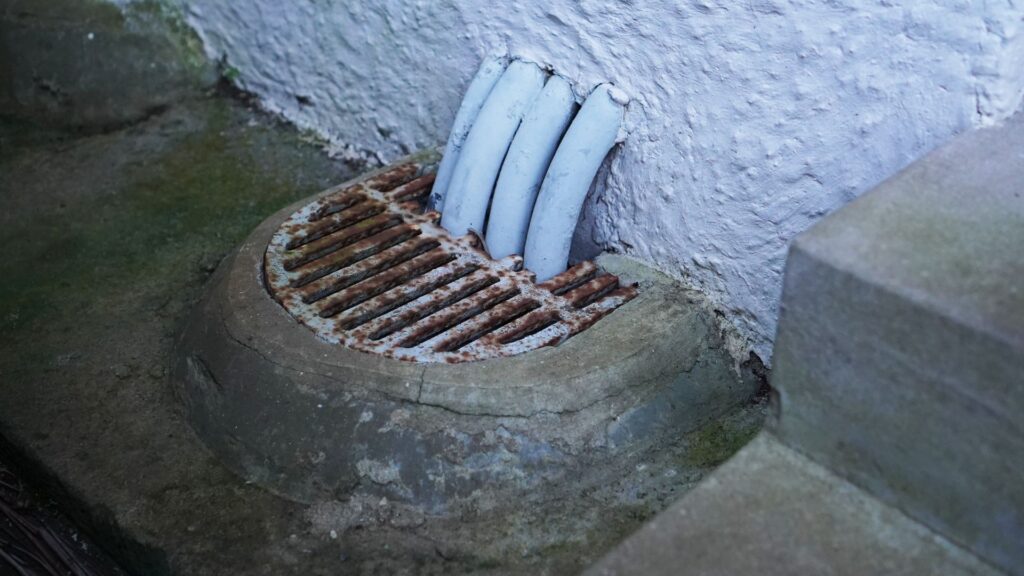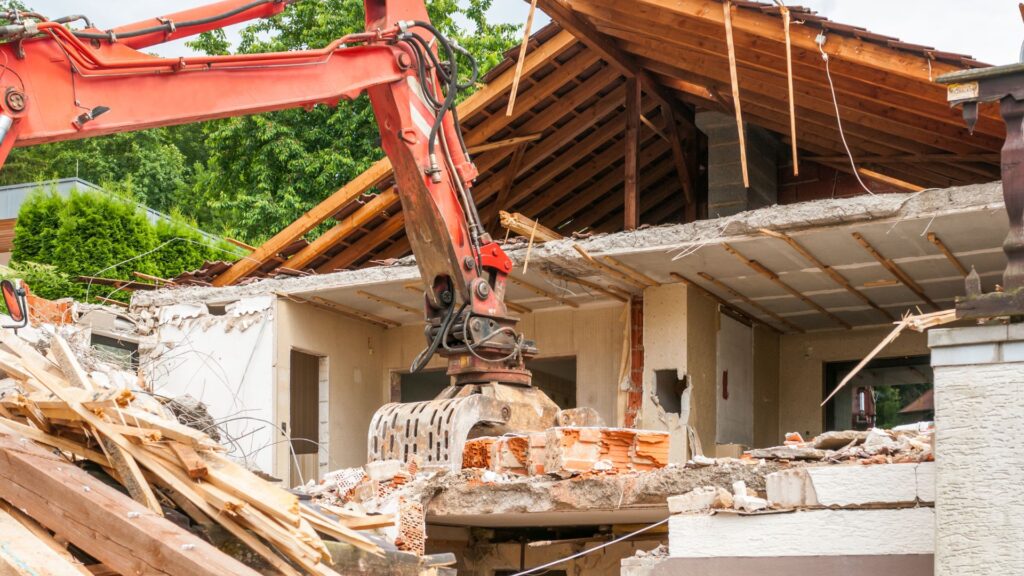Welcome to our comprehensive guide on cess pits in New Zealand, where we delve into everything you need to know about these essential drainage systems. Whether you’re a homeowner, business owner, or just curious about how cess pits help manage stormwater and protect the environment, this guide is designed to provide you with clear, actionable insights. From understanding how cess pits work to learning about their installation, maintenance, and costs, we’ve got you covered. We’ll also touch on the legal requirements surrounding cess pits in NZ, ensuring you stay compliant while keeping your property safe from flooding.
A cess pit in New Zealand is an underground container designed to collect and manage stormwater runoff and debris, helping prevent flooding and protect the environment. Typically made from concrete or plastic, cess pits filter out pollutants before directing excess water to the drainage system. Regular maintenance and cleaning are crucial to ensure proper functionality and compliance with local regulations.
Table of Contents
What Is a Cess Pit?
Definition
A cess pit, sometimes called a catch basin or stormwater pit, is essentially a container designed to collect rainwater runoff. It is installed underground and connected to drainage systems to prevent flooding and manage water flow. In simple terms, a cess pit acts as a holding tank, gathering not just rainwater but also debris like leaves, sand, and other pollutants that can accumulate on roads, driveways, and other surfaces during heavy rains. Think of it as the first line of defense in a stormwater management system, ensuring that rainwater is stored temporarily before being redirected to proper drainage facilities.
How It Works
Cess pits operate based on a straightforward but highly effective mechanism. Rainwater flows through grates or surface openings into the pit. As the water enters, it passes through a sediment trap that allows larger debris to settle at the bottom. This prevents clogging of pipes and other parts of the drainage system. The clean water is then allowed to exit through an outlet pipe connected to the broader stormwater drainage system or sewer network. By capturing this excess water, cess pits help prevent flooding in low-lying areas and manage the flow of stormwater during heavy rainfall. Additionally, they play a crucial role in controlling pollutants, as the debris collected in the cess pit can be removed periodically to ensure that the drainage systems remain clean and effective.
Common Uses in NZ
Cess pits are widely used across New Zealand due to the country’s diverse climate and frequent rainfall. In urban areas, they are often found near roads and footpaths to help manage runoff from concrete and asphalt surfaces, reducing the risk of flooding and keeping streets clear. Residential properties in both cities and rural areas may also have cess pits to handle rainwater runoff from driveways, roofs, and other surfaces that don’t absorb water. Commercial developments, including shopping centers, office buildings, and industrial sites, often rely on cess pits as part of their stormwater management plans, ensuring that large volumes of water are safely managed during storms.
The need for effective stormwater management is especially critical in New Zealand, where unpredictable weather patterns can lead to intense rainfall and flooding. Installing cess pits in strategic locations helps minimize these risks and protects both infrastructure and natural environments. Regular maintenance is crucial to keeping cess pits functioning properly, ensuring that they continue to effectively capture water and debris.

Why Are Cess Pits Important In NZ?
Cess pits play a crucial role in New Zealand’s infrastructure, particularly in stormwater management. With the country’s diverse climate, which often includes heavy rainfall, cess pits are an essential component to manage water runoff and protect both urban and rural areas. Here’s why they are so important:
Flood Prevention
Cess pits are a frontline defense against flooding, especially in areas of New Zealand that experience significant rainfall. When it rains heavily, water runoff can accumulate quickly, overwhelming drainage systems and causing floods. Cess pits act as collection points for this runoff, allowing water to be safely diverted away from streets, homes, and businesses. By catching and storing the excess water, cess pits reduce the pressure on stormwater systems and help prevent flooding that could damage property and infrastructure. This is particularly important in urban areas where concrete and other impermeable surfaces limit the natural absorption of water into the ground.
Environmental Protection
Beyond flood prevention, cess pits serve an environmental purpose by filtering out debris and pollutants. When rainwater flows across streets, driveways, and gardens, it can pick up harmful substances like oil, chemicals, and litter. If this polluted water were to enter rivers, lakes, or the ocean untreated, it could cause significant harm to New Zealand’s ecosystems. Cess pits act as a filtration system, trapping these pollutants before they reach natural waterways. This helps to protect the health of the environment, preserving the quality of freshwater sources and supporting the diverse wildlife that depends on clean water to thrive.
Regulatory Compliance
In New Zealand, there are strict regulations surrounding stormwater management to ensure that communities are protected from flooding and that the environment is preserved. The installation of cess pits is often a requirement under local council rules, particularly in areas where flooding is a known risk or where developments are taking place. These regulations ensure that stormwater is properly managed and that cess pits are maintained to function effectively. Compliance with these rules is not only a legal requirement but also a responsibility for property owners and developers to ensure the safety and sustainability of their communities. Failing to install or maintain cess pits in regulated areas could result in fines and penalties, further emphasizing the importance of proper stormwater management.
By understanding the vital role that cess pits play in flood prevention, environmental protection, and regulatory compliance, it becomes clear that these systems are a critical part of New Zealand’s infrastructure. Proper installation and maintenance of cess pits help safeguard communities from the destructive forces of nature while also preserving the natural environment for future generations.
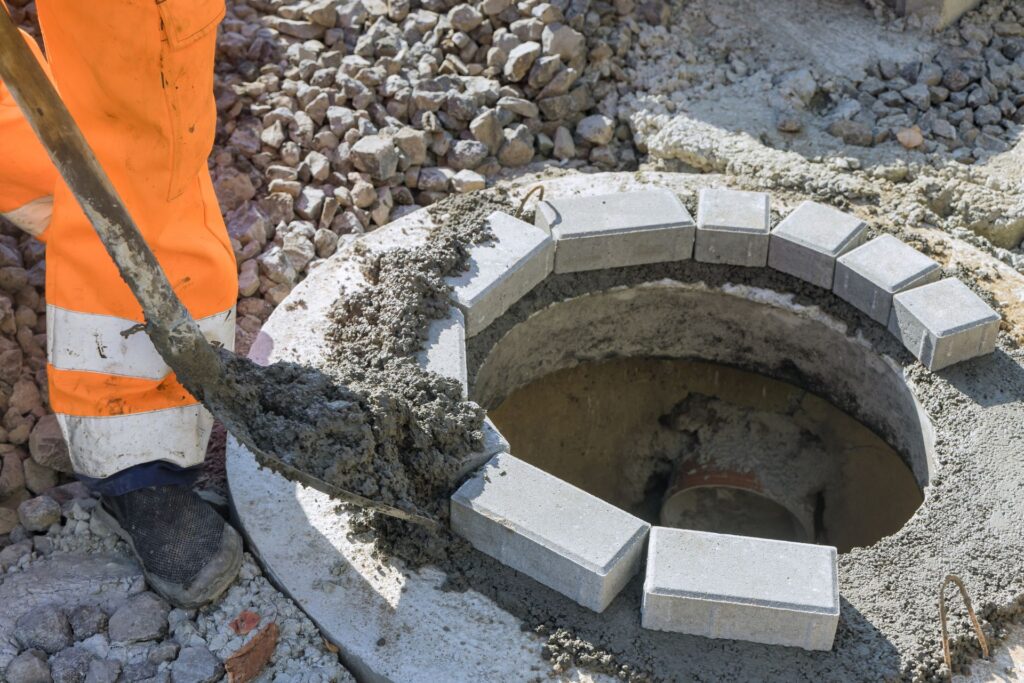
Types Of Cess Pits Available In NZ
When it comes to managing stormwater and ensuring that debris doesn’t clog your drainage system, choosing the right type of cess pit is crucial. In New Zealand, cess pits are an essential part of many residential and commercial properties, particularly in areas prone to heavy rainfall. Here’s a closer look at the different types of cess pits available, so you can make an informed decision based on your needs.
Traditional Cess Pits
Traditional cess pits have long been the go-to solution for stormwater management. Typically, these pits are constructed from concrete or plastic. Their primary function is to act as a settlement chamber, trapping sediment and debris before water is discharged into the drainage system. The simplicity of their design is one of the key reasons why they remain popular, even with modern alternatives available.
- Concrete Cess Pits: These are highly durable and have been used in New Zealand for decades. The weight of concrete ensures that the cess pit remains in place, even in heavy rain or when the ground shifts. Concrete pits are often large, making them suitable for properties that experience significant water runoff. However, their size and weight also make them more difficult and costly to install.
- Plastic Cess Pits: Plastic cess pits are lighter and easier to install. They are a popular choice for smaller properties or areas where excavation space is limited. Despite being less robust than concrete, advances in plastic materials have improved their longevity. Additionally, plastic cess pits are more resistant to corrosion and cracking over time. However, they may not be as effective in areas with high traffic or significant ground movement.
In essence, traditional cess pits are a solid choice for homeowners and businesses alike, particularly for those looking for a straightforward and reliable solution to stormwater management.
Modern Innovations
The stormwater management industry has seen several innovations in cess pit technology, providing more advanced solutions that cater to the evolving needs of New Zealand properties. Modern cess pits incorporate features aimed at improving efficiency, reducing maintenance, and ensuring better filtration of debris.
- Self-Cleaning Cess Pits: One of the most notable advancements is the self-cleaning cess pit. These innovative systems are designed to automatically remove the buildup of debris and sediment that can clog traditional pits over time. This reduces the need for frequent manual cleaning, saving homeowners and businesses time and money. While they may come at a higher upfront cost, the long-term benefits in terms of maintenance are significant.
- Enhanced Filtration Systems: Another modern innovation includes cess pits with enhanced filtration systems. These are especially beneficial in areas where finer debris or contaminants are a concern. Advanced filtration technology can help prevent harmful pollutants from entering waterways, making them an eco-friendly option. These pits are gaining popularity in environmentally-conscious areas and are ideal for businesses looking to meet sustainability goals.
In summary, modern cess pits offer improved functionality and are becoming an increasingly popular choice for those looking to reduce maintenance and environmental impact.
Making the Right Choice
Deciding on the type of cess pit that is right for your property depends on several factors. If you’re dealing with heavy water runoff or need a robust system for a larger area, concrete cess pits may be the way to go, despite their higher installation cost. However, for smaller properties or those looking for an easier installation, plastic cess pits offer a more accessible solution. If reducing maintenance and being environmentally friendly are priorities, modern options like self-cleaning cess pits or those with enhanced filtration systems might be worth the investment.
Whichever type you choose, ensuring that your cess pit is suitable for your property’s specific needs will help protect against flooding and other stormwater-related issues, providing long-term peace of mind.
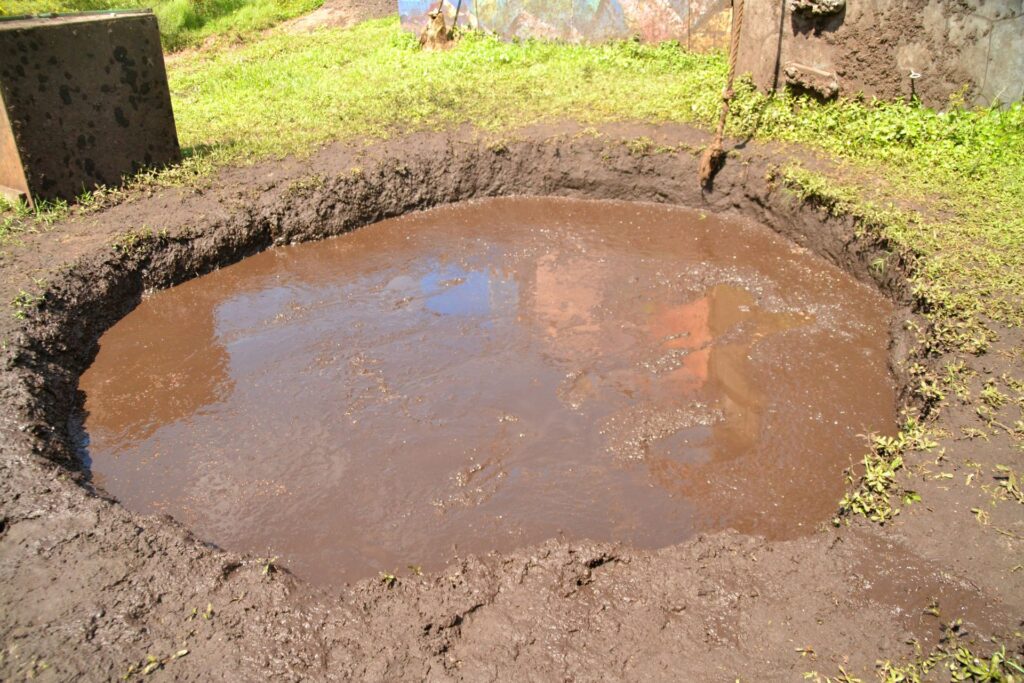
Installing A Cess Pit In NZ
When considering the installation of a cess pit in New Zealand, it’s crucial to have a clear understanding of the various factors involved to ensure that the installation is done correctly and effectively. A cess pit, also known as a catch pit, helps manage stormwater by collecting runoff and allowing debris to settle, reducing blockages in drainage systems. In this section, we’ll walk through the steps involved in the installation process, highlighting the importance of proper site assessment and professional help to meet NZ standards.
Site Assessment
Before installing a cess pit, the first and most important step is a thorough site assessment. The nature of your land will largely determine the efficiency and longevity of your cess pit, so taking this seriously can save you headaches and unnecessary costs in the future.
1. Soil Type: The type of soil you have can affect the cess pit’s ability to drain effectively. For example, clay-heavy soils may retain water, which can lead to flooding or slow drainage, while sandy soils may allow for better drainage but could lead to instability around the pit. A professional assessment of the soil type can help identify whether additional reinforcement or specific materials are necessary during installation.
2. Water Flow: Understanding the natural water flow on your property is critical. Installing a cess pit in an area where water naturally pools or in the path of heavy runoff ensures that it effectively captures stormwater. Misjudging the water flow could result in overflow or, even worse, water damage to structures on your property.
3. Legal Requirements: It’s also important to note that cess pit installations in New Zealand are subject to local council regulations. Depending on your location, you may need to obtain permits or follow specific guidelines to ensure that the installation is compliant. This is especially important if the cess pit connects to a public stormwater system or affects nearby water bodies.
Professional Installation
While it may be tempting to tackle the installation of a cess pit on your own, hiring a professional is highly recommended for several reasons. Installing a cess pit involves technical work that, if not done correctly, can lead to serious issues down the line.
1. Compliance with Regulations: Professionals are well-versed in local building codes and environmental regulations, which means they can ensure your installation meets all the necessary legal requirements. This not only ensures the safety and effectiveness of the cess pit but also protects you from potential fines or legal complications.
2. Proper Functionality: A professional installer has the expertise to ensure the cess pit functions as intended. Improper installation can result in poor water drainage, overflow, or even structural failure, which could lead to costly repairs and environmental damage. Professionals also have the tools and experience to install the pit in a way that maximizes its effectiveness, taking into account factors such as the correct depth, alignment, and grading.
3. Longevity and Maintenance: A correctly installed cess pit will last longer and require less maintenance over time. Professionals can advise on the best materials and techniques to ensure durability, which can save you money in the long term.
Installation Process
To give you a better idea of what installing a cess pit involves, here’s a simplified step-by-step guide that breaks down the process. This will help you understand the work that goes into it and why professional installation is often the best choice.
1. Excavation: The first step is to excavate a hole for the cess pit. This hole needs to be deep and wide enough to accommodate the pit, as well as any necessary reinforcement such as concrete or gravel bedding. Proper excavation ensures the pit will be stable and level.
2. Placement of the Pit: Once the hole is dug, the cess pit is carefully placed inside. At this stage, it’s crucial to ensure that the pit is level and properly aligned with the intended drainage system. In some cases, gravel or a concrete pad may be added to the bottom of the hole to stabilize the pit and improve drainage.
3. Connecting to the Drainage System: After the cess pit is securely in place, it needs to be connected to your property’s drainage system. This often involves linking the cess pit to a network of pipes that carry stormwater away from buildings and other structures. Ensuring that these connections are watertight and free of leaks is critical for the system to work properly.
4. Backfilling and Compaction: The final step involves backfilling the area around the cess pit with soil or gravel, depending on the site conditions. This helps to secure the pit and prevent it from shifting or settling over time. Compaction of the backfilled soil ensures stability and minimizes the risk of collapse.
5. Final Inspection: A professional installer will typically perform a final inspection to ensure that everything is functioning as it should. This may include testing the drainage system to check for any leaks or blockages and making any necessary adjustments before completing the job.
By following these steps, and by ensuring that your cess pit is installed by a knowledgeable professional, you can enjoy peace of mind knowing that your stormwater management system is up to code and working efficiently. Proper site assessment and installation are the keys to preventing future issues, such as flooding or structural damage, and will ensure the cess pit remains functional for years to come.

Maintenance And Cleaning Of Cess Pits
Maintaining and cleaning cess pits regularly is essential to ensure they function properly and prevent any potential hazards. Here’s a detailed guide to help you understand the importance of routine care and how to carry out the necessary maintenance effectively.
Routine Inspections
Routine inspections of cess pits are crucial in catching minor issues before they escalate into major problems. Ideally, cess pits should be inspected at least twice a year, or more frequently in areas prone to heavy rainfall or with high levels of debris. The purpose of these inspections is to ensure that the cess pit is operating correctly and is free from any blockages or sediment build-up that could impede its function.
When performing an inspection, you’ll want to look for any visible signs of debris accumulating around the entrance to the pit, such as leaves, silt, or trash. Additionally, the water level should be checked to confirm that it’s draining as expected. If you notice that water levels are unusually high or stagnant, this could indicate a blockage that needs to be addressed immediately. Regular inspections help maintain the system’s integrity and prevent more costly repairs down the road.
Cleaning Methods
Proper cleaning of a cess pit is another vital aspect of maintenance, and it requires a thorough approach. There are a few methods commonly used to clean cess pits, depending on the size of the pit and the amount of waste that has accumulated.
For smaller cess pits or those that only require minor cleaning, manual removal of debris might be sufficient. This involves physically removing any solid materials such as leaves, mud, or trash that have collected at the bottom of the pit. While this method is more labor-intensive, it can be effective for regular maintenance and prevention of build-up.
However, for larger cess pits or those with significant accumulation, specialized suction trucks are typically the go-to solution. These trucks are equipped with powerful vacuum systems that can efficiently remove sludge, silt, and other waste materials without the need for manual labor. In addition to cleaning out the cess pit, these trucks can also clear any blockages in the connecting pipes, ensuring that water flows freely through the system. It’s recommended to hire professional services for this type of cleaning at least once a year to keep the cess pit in optimal condition.
Signs of Cess Pit Problems
While routine inspections and cleaning are essential, it’s also important to be aware of the signs that a cess pit might be experiencing issues. Early detection of these signs can help prevent more serious problems such as flooding or contamination.
One of the most common signs of a cess pit issue is slow drainage. If you notice that water is taking longer than usual to drain away from your property, this could be a sign of a blockage or that the cess pit is full and needs to be cleaned. Another telltale sign is foul odors emanating from the pit or nearby areas. The smell could indicate that waste material is not being properly contained or is decomposing in the pit due to a blockage or lack of maintenance.
Overflowing cess pits are a more severe issue and should be addressed immediately. If water or waste is visibly overflowing from the pit, this could lead to environmental contamination and damage to surrounding property. Overflowing can occur if the pit is not cleaned regularly or if there is an excessive amount of rainwater entering the system.
In conclusion, regular maintenance of cess pits through routine inspections, proper cleaning methods, and keeping an eye out for warning signs of trouble is key to ensuring a long-lasting and effective drainage system. Proactive care helps avoid costly repairs and keeps the system functioning efficiently.

Costs Associated With Cess Pits In NZ
When you’re looking into cess pits, understanding the full range of costs is essential to budgeting properly. Below, we break down the various expenses, from installation to ongoing maintenance, and share some practical tips to help you save money in the long run.
Installation Costs
The installation costs for a cess pit in New Zealand vary depending on a range of factors. On average, you can expect to pay anywhere between $2,000 and $6,000. The overall cost will depend on several key elements:
- Size: Larger cess pits, which are needed for properties with greater water runoff, will naturally cost more to install. A larger pit requires more excavation, more materials, and potentially a more complex design.
- Materials: The materials used also play a significant role in determining the final price. Concrete pits are typically more durable and longer-lasting but can be more expensive upfront compared to plastic or fiberglass alternatives.
- Labor: Labor costs are another major factor. The amount of excavation required, the complexity of the installation, and the geographical location can all impact the price of labor. For example, installing a cess pit in an urban area with easy access to machinery might be cheaper than doing so in a remote or difficult-to-reach location.
Additionally, there may be consent fees required by local councils. In many cases, installation must adhere to specific regulations, especially if you’re close to a body of water or in a flood-prone area.
Maintenance Costs
Maintaining your cess pit is crucial to ensure it functions effectively and lasts as long as possible. The frequency and cost of maintenance depend largely on the amount of debris and water runoff it handles. Generally, cess pits should be inspected and cleaned at least once a year. Here’s a breakdown of typical maintenance costs:
- Professional Cleaning Services: The cost for a professional cess pit cleaning in New Zealand usually ranges from $200 to $500 per service. If the pit is located in an area with heavy leaf fall or sediment, more frequent cleanings may be required.
- Equipment Costs: If you prefer a DIY approach, purchasing the necessary tools, such as a suction pump and gloves, can be a one-time investment of $500 to $1,000. However, it’s important to understand the risks and proper techniques for cleaning cess pits, as improper maintenance can lead to clogs and more expensive repairs.
Ignoring regular maintenance can lead to blockages and overflow, which can incur significant costs in repairs. Worst-case scenarios may require replacing the entire cess pit, which would result in an additional $2,000 to $6,000, or even more, depending on the extent of the damage.
Cost-Saving Tips
Proper maintenance and strategic planning can help reduce both the initial and ongoing costs associated with cess pits. Here are some practical cost-saving tips:
1. Regular Maintenance: As the saying goes, prevention is better than cure. By regularly cleaning out your cess pit, you can avoid larger, more expensive repairs down the road. A proactive approach prevents blockages that can result in overflow or structural damage to the pit.
2. DIY for Minor Issues: While professional cleaning services are the most reliable option for deep cleaning, minor maintenance tasks can often be handled yourself. Clearing out leaves, sediment, and debris that build up on the surface can be done with basic equipment and saves on service fees.
3. Consider Alternative Materials: When installing a cess pit, consider whether a plastic or fiberglass option might be more cost-effective than concrete. While they may not be as durable as concrete, they can be easier and less expensive to install, particularly for smaller properties with lower water runoff needs.
4. Shop Around for Quotes: Always get multiple quotes before committing to an installer or maintenance service. Prices can vary significantly from one contractor to another, and getting several opinions will help ensure you’re getting a fair deal.
By understanding the different costs associated with cess pits and taking a proactive approach to maintenance, you can ensure your cess pit remains functional while keeping your expenses in check.
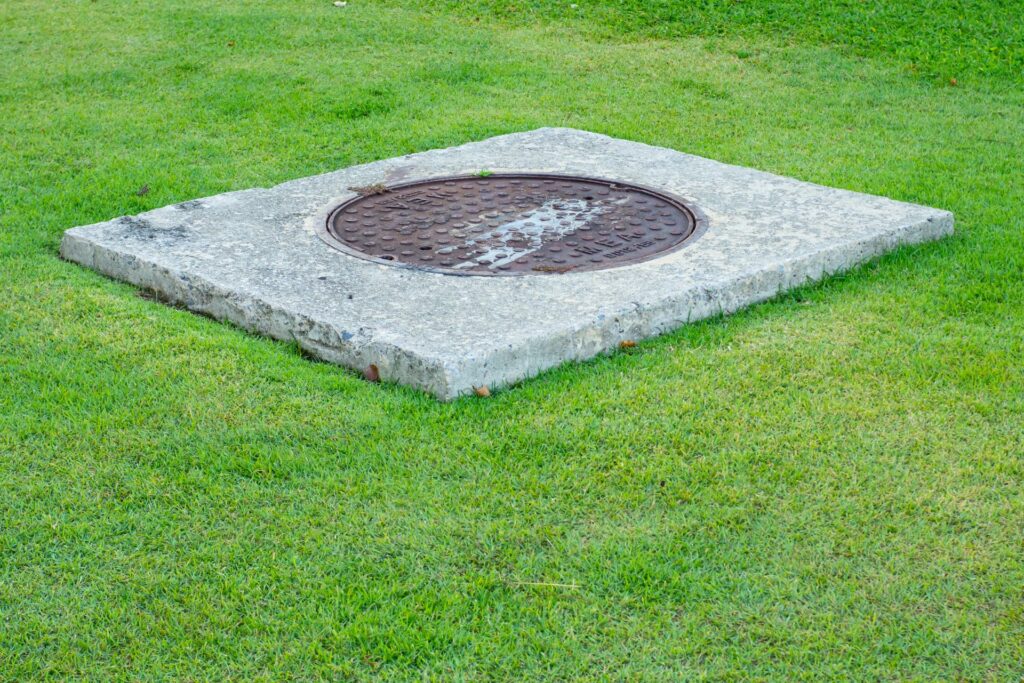
Legal Considerations And Compliance in NZ
Local Regulations
When installing a cess pit in New Zealand, local regulations play a crucial role in determining what is legally acceptable. The legal requirements for cess pits can vary depending on the region, as different councils have their own bylaws and standards that must be followed. For instance, regions like Auckland, Wellington, and Christchurch may have specific rules on the size, placement, and type of cess pit you can install. Property owners are often required to ensure that their cess pits do not negatively impact the surrounding environment, particularly in terms of groundwater contamination or drainage issues. It’s essential to research the regulations in your specific area by contacting your local council or checking their official website for the most up-to-date information.
Council Approvals
In many cases, installing a cess pit may require council approval before you can proceed. This is particularly true if your installation could affect stormwater systems, groundwater, or public health. Council approval is often required to ensure that your cess pit is compliant with the Resource Management Act (RMA) and other local environmental standards. For example, if you live in an area that’s prone to flooding, you may need to demonstrate that your cess pit will not contribute to increased flood risk. Additionally, for larger properties or commercial projects, there may be stricter requirements that involve comprehensive planning and review by council engineers. Failing to obtain the necessary approvals could lead to delays in your project, increased costs, or the need to modify your cess pit design to meet council standards.
Penalties for Non-Compliance
Ignoring the legal guidelines surrounding cess pit installation can result in serious consequences. If your cess pit does not comply with local regulations, you may face fines or penalties imposed by the council. These penalties can range from a few hundred dollars to several thousand, depending on the severity of the non-compliance and the potential environmental impact. In some cases, councils may also require the removal or modification of the cess pit at your expense, which can be both costly and time-consuming. Moreover, repeated violations could result in legal action, further increasing your financial and legal burden. To avoid these issues, it’s vital to stay informed and ensure that your cess pit installation meets all the necessary legal requirements.
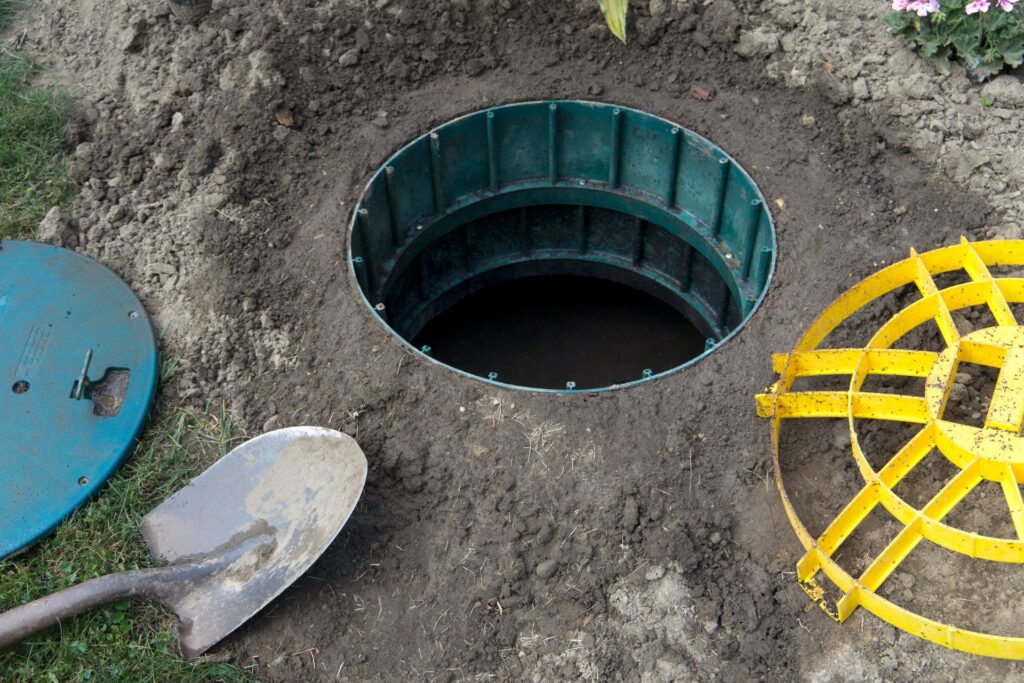
Common Questions About Cess Pits
When dealing with cess pits, it’s normal to have a lot of questions. They’re an essential part of managing surface water, particularly in New Zealand, where rainfall can be unpredictable. Below, we’ll address some of the most frequently asked questions to help you better understand how cess pits work, how to maintain them, and what to do when problems arise.
How long does a cess pit last?
Cess pits, when properly maintained, can last for decades. The lifespan of a cess pit largely depends on the material it’s made from and how well it is cared for over time. For example, concrete cess pits are known for their durability and can easily last 50 years or more with regular maintenance. However, if neglected, the pit could degrade much faster, leading to costly repairs or even replacement.
Regular inspections and timely cleaning play a huge role in ensuring the longevity of your cess pit. If debris is allowed to accumulate, it can speed up wear and tear, reducing the pit’s overall lifespan. Simple steps like cleaning out leaves, dirt, and other blockages can make a big difference in extending the life of the cess pit.
Can a cess pit handle heavy rain events?
Cess pits are designed to handle rainwater runoff, but their effectiveness during heavy rain events depends on their size, capacity, and how well they’ve been maintained. A properly functioning cess pit should be able to manage most typical rain events, provided it’s not clogged with debris or silt. However, during extreme weather events or if the pit is undersized for the area it’s serving, it may struggle to keep up with the volume of water.
If you live in an area prone to heavy rainfall, it’s essential to have your cess pit checked regularly to ensure it’s in good working order. Upgrading the system or increasing capacity might be necessary if flooding or overflow is a recurring issue.
What should I do if my cess pit overflows?
An overflowing cess pit is a clear sign that something is wrong. When this happens, the first step is to stop any additional water from entering the system if possible. You’ll want to avoid running any taps or allowing any other water sources to contribute to the overflow.
Next, it’s essential to contact a professional to assess the situation. A blocked or overflowing cess pit can quickly turn into a more significant issue if not addressed promptly. The professional will likely need to clear out any blockages, inspect the cess pit for damage, and potentially advise on maintenance steps to prevent future overflows.
It’s also essential to be mindful of the environmental and health risks associated with cess pit overflows. In some cases, hazardous materials can be present in the water, so it’s best to let professionals handle the cleanup.
How often should a cess pit be inspected and cleaned?
The frequency of cess pit inspections and cleaning depends on several factors, including how much water the pit handles and the surrounding environment. As a general rule of thumb, you should have your cess pit inspected at least once a year. However, if your cess pit is located in an area prone to heavy rain or near trees and other vegetation that may cause blockages, more frequent inspections may be necessary.
Cleaning should also be performed regularly, especially after large storms. The buildup of debris, leaves, and silt can significantly reduce the efficiency of your cess pit, leading to water backing up and potential overflow. Staying on top of routine cleaning not only ensures your cess pit remains functional but also extends its lifespan.
By addressing these common questions, homeowners in New Zealand can better manage their cess pits, avoid problems like overflow, and maintain efficient water drainage systems. Regular inspections, prompt action during heavy rain events, and good maintenance habits are the keys to keeping cess pits in good working condition for years to come.
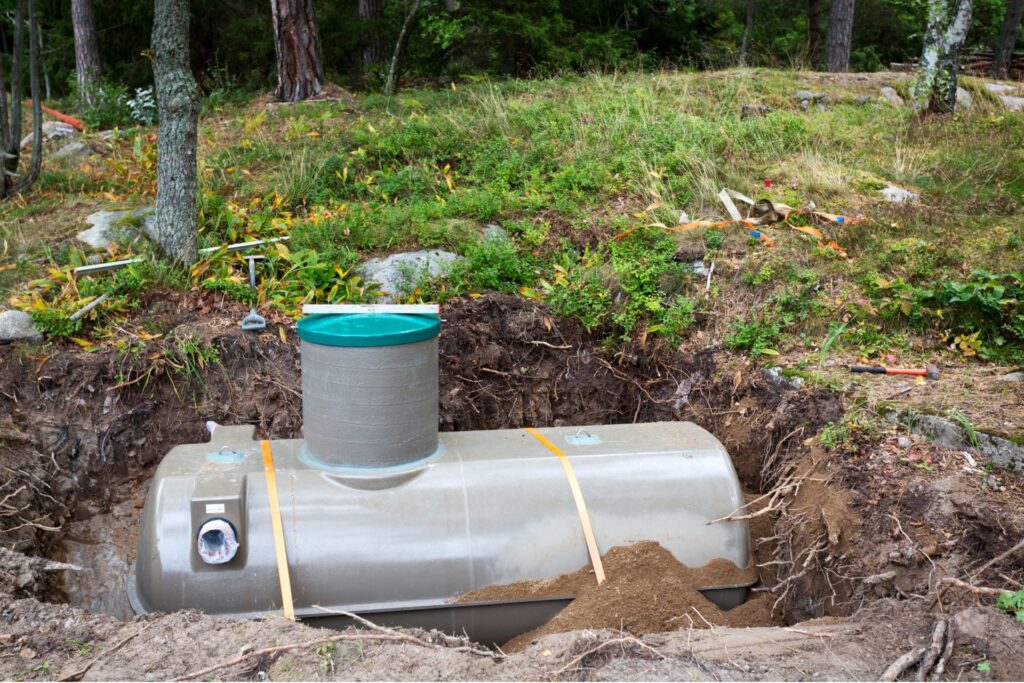
fAQs: about cess pits NZ
What is a cess pit and how does it work?
A cess pit is an underground tank designed to collect and manage rainwater runoff and debris. It captures excess water from surfaces like roads and driveways and directs it to the drainage system. Inside the cess pit, sediment and pollutants are filtered out, preventing blockages and environmental contamination.
Why are cess pits important in New Zealand?
Cess pits are essential in New Zealand for preventing flooding, particularly in areas prone to heavy rainfall. They also help protect the environment by filtering out debris and pollutants before the water reaches natural waterways or drainage systems.
How often should a cess pit be cleaned?
Cess pits should be inspected and cleaned at least once a year, but in areas with heavy rainfall or a large amount of debris, more frequent cleaning may be necessary. Regular maintenance helps prevent blockages, overflows, and potential damage to the drainage system.
What are the different types of cess pits available in NZ?
There are traditional cess pits, typically made from concrete or plastic, and modern innovations such as self-cleaning cess pits with advanced filtration systems. The type you choose will depend on your specific needs, location, and budget.
What is the typical cost of installing a cess pit in New Zealand?
The cost of installing a cess pit in NZ varies depending on the size, material, and complexity of the installation. On average, installation can range from $1,000 to $5,000, but larger or more complex systems may cost more. It is advisable to get quotes from professionals to estimate your specific costs.
Can I install a cess pit myself, or do I need a professional?
While some homeowners may consider a DIY installation, it is recommended to hire a professional for cess pit installation. Proper placement and connection to the drainage system are crucial to ensure the cess pit functions correctly and complies with local regulations.
What are the signs that my cess pit needs maintenance?
Signs that a cess pit requires maintenance include slow drainage, foul odors, visible overflow, or water pooling around the pit. Regular inspections and cleaning can help prevent these issues.
What are the legal requirements for cess pits in NZ?
In New Zealand, the installation of cess pits may be subject to local council regulations, especially in areas prone to flooding. Property owners should check with their local council to ensure compliance with stormwater management rules, which may require specific approvals or inspections.
Can a cess pit handle heavy rain events in New Zealand?
Yes, cess pits are designed to manage large volumes of water, especially in areas with heavy rainfall. However, proper sizing and regular maintenance are critical to ensure the cess pit can handle significant rain events without overflowing or becoming blocked.
What are the maintenance costs associated with cess pits in NZ?
Maintenance costs for cess pits in NZ typically involve periodic cleaning, which can range from $150 to $500 depending on the size and condition of the cess pit. Regular maintenance helps prevent costly repairs and ensures the cess pit continues to function efficiently.
Conclusion
In conclusion, cess pits play a crucial role in managing stormwater and protecting the environment in New Zealand, making them an essential feature for properties dealing with significant water runoff. Proper installation and regular maintenance are key to ensuring their effectiveness in preventing flooding and minimizing environmental damage. By staying vigilant and proactive in caring for their cess pits, property owners can avoid costly repairs and ensure long-term functionality. If you have concerns about the installation or maintenance of your cess pit, it’s always wise to consult a professional who can provide expert guidance and support.
About the Author:
Mike Veail is a recognized digital marketing expert with over 6 years of experience in helping tradespeople and small businesses thrive online. A former quantity surveyor, Mike combines deep industry knowledge with hands-on expertise in SEO and Google Ads. His marketing strategies are tailored to the specific needs of the trades sector, helping businesses increase visibility and generate more leads through proven, ethical methods.
Mike has successfully partnered with numerous companies, establishing a track record of delivering measurable results. His work has been featured across various platforms that showcase his expertise in lead generation and online marketing for the trades sector.
Learn more about Mike's experience and services at https://theleadguy.online or follow him on social media:


